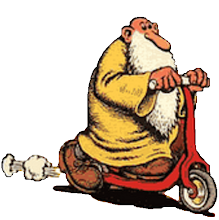
Online Journal
By Jerry Mazza
Sep 18, 2008, 00:14
On Thursday, 9/11/08, WeAreChange.org and the ncy911 Ballot Initiative group joined forces at Ground Zero. Read all about them at the above links. I joined them about 11:30 a.m. for the march and speeches that would begin around noon. The young WeAreChange leader Luke Rudkowski (a force unto himself) and the indefatigable Ballot Initiative leader Les Jamieson were there to kick off events.
If I had apprehensions about the march, they were eased by the people I met. Optimistic, well informed, open, they were ready to face a harassing lunatic fringe and/or provocateurs with a healthy dose of humor or equal edge. Believe it or not, the legion of cops seemed bent on protecting us as well. Perhaps after seven years of listening to 9/11 Truth some had sunk in. Also, WeAreChange’s special fund-raising effort, “First Responders First,” made friends on the blue side as well with firemen and EMTs.
In fact in February, when our beloved President Bush reneged on health care funding, he cut 77 percent of it for 9/11 first responders, from $108 million to $25 million. These were the men he grandstanded with on 9/11, praising them for their courage and service to America. On March 16, Senator Hillary Clinton helped passed the 2009 budget resolution to restore these and other severe cuts to 9/11 healthcare.
Whether or not these resolutions will hold in November after the election is another story. But on this day, “First Responders first” was part of the agenda. In fact, I wrote about their plight in 9/11’s second round of slaughter, a review of Heidi Dehncke-Fisher’s film documentary, Dust to Dust: the health effects of 9/11. It will give you a good idea of what these people are dealing with.
In addition, WeAreChange gathered a greater diversity of participants, black, Latino, Asian, a rainbow of people to march. Also, WeAreChange young people had come from various chapters around the country, and they were gaining international followers as well.
The first person I talked to that morning was a man named John. He held a placard with a photo of his nephew who was lost in the North Tower while on his first job at a brokerage house. John seemed to be in his early 50s, and had come all the way from a Chicago suburb to be here. We started talking about events. I told him I wrote for Online Journal and supplied some pieces of information on 9/11 he hadn’t heard before.
Others overheard and asked questions. There was a man from Houston, Texas, who had brought his 16-year old daughter, her boyfriend, and another friend to experience the events and the March on 9/11. His daughter was interested in journalism and he wanted her to experience this. He wasn’t sure what had happened at Ground Zero but he knew that his America had changed and that we were losing our civil liberties at an alarming rate.
That’s why he and the kids were here. He was an accountant and knew about money and the market and we had a talk about the puts and calls debacle which earned hundreds of millions of dollars for traders who obviously had foreknowledge of what was about to happen on 9/11. He reminded me how Arthur Anderson had walked from the Enron debacle clean.
I pointed out the black-screened Deutsche Bank building where a good share of that trading took place. It was still not razed after seven years. It could not be taken down by internal demolition ironically because of all the pollutants detected in it. It had recently suffered a fire while being disassembled manually. Two firemen died because someone had removed the standpipe and started a fire, consciously or not.
The deconstruction had been done originally by the John Galt Company, a shell company with mob ties, like many of the construction companies now working in the former pit. They seemed to suck up billions while nothing but a partial foundation for “something” stood. My Texas friend just shook his head, and not in disbelief. What amazed him, he said, was the ceaseless greed that had overcome our country, the criminality in high and low places. How the takers never seemed to have enough.
He added that people back home were drilling private oil wells and refining enough crude to sell for less than market prices. The profits being made, even at low-ball prices, left these entrepreneurs with lots of cash. As he described it, they had bought every luxury item they could find, and were running out of places to bury more cash.
This was a problem most Americans would not have these days -- including Lehman Brothers going bankrupt (with nearly 28,000 employees world-wide); and Fannie and Freddy on the Fed dole; and even AIG, looking for a multi-billion dollar bridge loan because it’s portfolio was downgraded with too much collateralized debt paper (not originally stated). As the teenagers joined us, and our new friend John, it was after noon, and we were told we were ready to move out and march.
Article





No comments:
Post a Comment